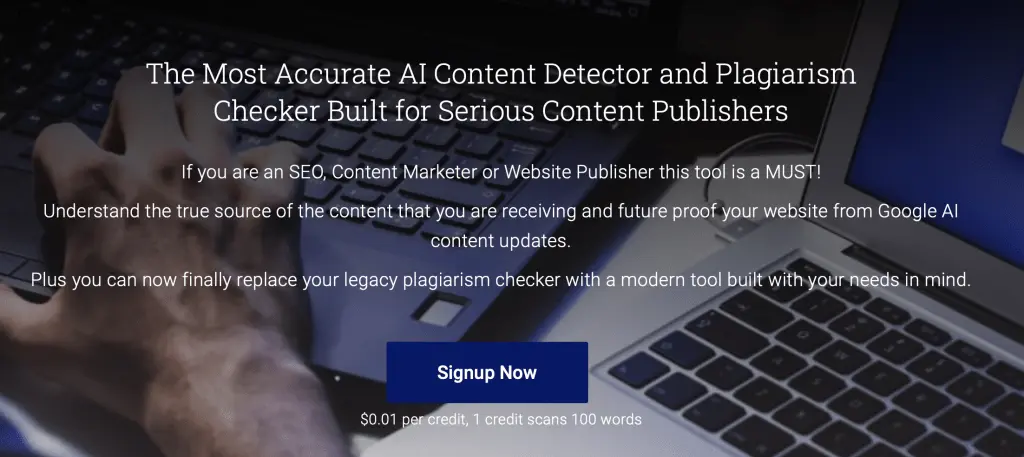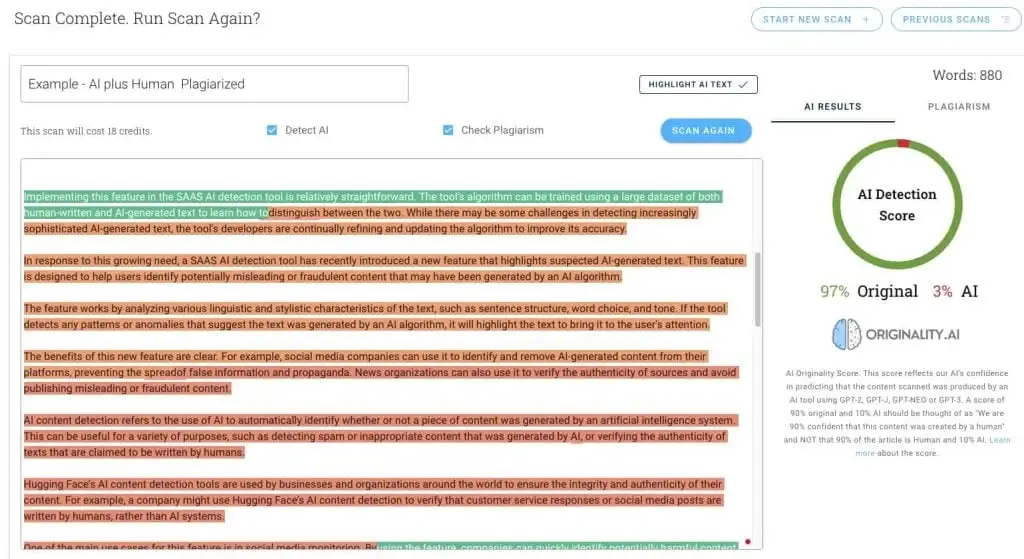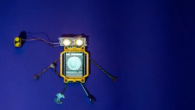
Non-Traceable AI: How to Quickly and Easily Get Around AI Scanners!
There is no denying the buzz around ChatGPT, with people actively looking for ways to avoid AI detection in their work. Some schools and universities don’t even let students use AI to write their writings. Still, new technologies and tools are coming out that can help you make AI content that can’t be tracked.
We suggest, in short, innovation.to prevent AI from learning you write!
This blog post will explain “non-traceable AI” and show you how to get around those annoying AI monitors.
Artificial intelligence is that which is traceable.
Systems or software of artificial intelligence referred to as “non-traceable AI” are those whose origins or creators are made difficult or impossible to ascertain.
These techniques are designed to leave no traces, patterns, or other unique traits that might be used to identify the generated material with a certain AI model or person.
The goals of non-traceable AI include privacy protection and avoiding linking or locating items produced by AI.
This idea is often covered in relation with creating content, whether it be music, pictures, or writing. It can be difficult to tell content made by AI from that created by humans.
With an AI device, what is accomplished?
Systems or software of artificial intelligence referred to as “non-traceable AI” are those whose origins or creators are made difficult or impossible to ascertain.
These techniques are designed to leave no traces, patterns, or other unique traits that might be used to identify the generated material with a certain AI model or person.
The goals of non-traceable AI include privacy protection and avoiding linking or locating items produced by AI.
This idea is often covered in relation with creating content, whether it be music, pictures, or writing. It can be difficult to tell content made by AI from that created by humans.
With an AI device, what is accomplished?
Software parts called AI detectors look for material produced by machines or AI.Many times, people refer to them as AI content checks or AI plagiarism detectors.
These artificial intelligence systems are designed to scan through a variety of digital assets for qualities that indicate AI growth, with language being the most prominent.
AI detectors hunt for AI-generated information using a range of approaches and processes. They could seek for trends, linguistic features, statistical outliers, or other indicators that are common in machine-generated outputs, for example.
They guarantee real, original material, help to identify plagiarism, and differentiate between content created by humans and machines.
Introducing Originality.Artificial intelligence—Our untraceable recommended tool

AI untraceable tool
originating.AI is far superior than other technologies when it comes to precise identification. In fact, the race isn’t even close!
Originality is one of the best tools for finding AI.When it comes to accuracy, AI is unmatched, especially when it comes to finding content that was made by AI.
A dataset with 1200 samples was used for a lot of tests, and Originality.AI got an impressive 96% accuracy rate. Still, the closest competitor only got 35% of the inventiveness.This amazing accomplishment distinguishes AI.
How to keep AI detection away with originality.Robotics
Let’s look at a few ways to stop Originality from recognizing stuff produced by AI.I see.
First piece of advise is to write in many styles.
Should you choose to use ChatGPT or any other equivalent AI technology, you should build each one separately and split your content. With this method, the flow is less prone to be recognized as machine generated.
When time is spent to examine and adjust each component, it gets even better and lowers the possibility of its detection.Writing each section separately allows you to incorporate subtleties and variances that are frequent in human communication but not in a single piece produced by an AI system.
The second piece of advice is to avoid repeating yourself.
Use of frequently used words or patterns should be avoided when using ChatGPT to prevent being found. Artificial intelligence driven interactions often use formulaic language because they are based on patterns and models. They are therefore easier for detecting tools to identify.
One way to fight this is to try to use a variety of words and sentence patterns. For example, don’t use the same sentence structure over and over. Instead, use different words or phrases to connect the ideas.
Avoid using the same phrases or words too often as well. Rather than restating oneself, make your point utilizing synonyms, antonyms, or similar words.
Not to mention avoid using cliches or overdone expressions. Rather, speak for yourself to avoid coming out as a script reader.
Revise and polish.
QuillBot and other applications of this nature allow you to alter and restate AI-generated text without losing anything. Artificial intelligence (AI) writing program QuillBot paraphrases and rewrites other people’s work.
Rewritten text with QuillBot and other similar programs will sound less robotic and more human. This reduces the likelihood that someone will realize that it was generated by a computer.
Simply put the created text into the program, select how much rewriting you want, and QuillBot will generate a new version of the text with the same meaning but written in a different style. This process can be done more than once to make completely new versions.
Tip #4: Check with a tool that finds AI
Use a reliable AI recognition tool like Originality.ai to make sure that no one finds your content.
This advanced algorithm-based system can correctly spot material made by AI and plagiarism. If you use Originality.ai to check your created text, you can be sure that it won’t be marked as coming from an AI source.
Just copy and paste the text into the platform, and it will make a report showing any instances of plagiarism or automatically generated content that needs to be fixed before the content can be used for its original purpose.
This stage ensures that your content is unique and not simply a replica of something that already exists.
If you follow these guidelines, you can significantly reduce the likelihood that AI will be discovered and create material that is both unique and difficult to distinguish from information created by humans.

FAQs about AI that can’t be tracked
Can AI information be found?
Sometimes it’s hard to spot material made by AI, especially as AI models get smarter. There are, however, tools and methods being created to find material made by AI. These are called AI checkers or AI detectors.
Exists an AI technology that can circumvent AI detectors by itself?
Artificial intelligence is continually evolving, hence people might be trying to improve the usefulness of material produced by AI and perhaps even sneak past detection systems.This makes the competition between those who create AI recognition systems and those who try to get around them into a kind of cat and mouse.
Exist any unnoticed moral issues with AI?
In fact, AI presents unsolvable moral issues, especially with relation to responsibility, privacy, and misuse.
What unquantifiable advantages of artificial intelligence exist?
Trackless AI has certain uses even if it presents moral questions. Some prospective advantages are as follows:
- Maintaining your anonymity
- Secure data management for critical operations
- Enhanced internet security
- guarding of intellectual property
- Lastly, untraceable AI
Last words on AI that can’t be tracked
Original material can be generated via ChatGPT, AI text generators, and other AI essay writers.You must add your own flair, though, to prevent your work from coming out as robotic, dull, or as though it was produced by AI-detection software.
It also suggests that you should write on interesting issues, avoid using dry and boring language, and break down challenging subjects into doable pieces.
Even if artificial intelligence is an amazing technology, personality and uniqueness cannot be achieved by it. To produce a masterpiece, therefore, employ your writing skills and let your imagination to run wild.












